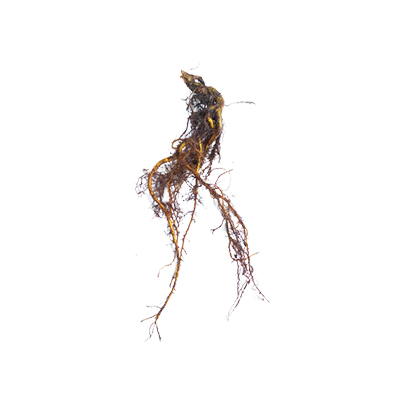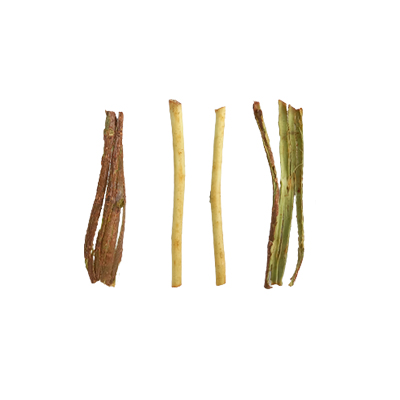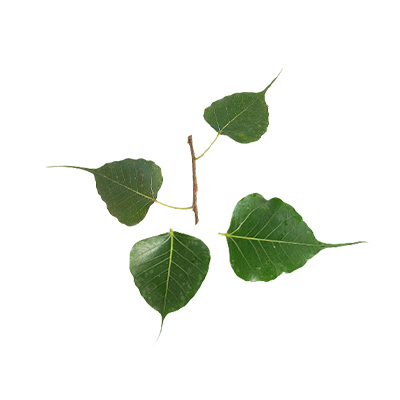Sacred Fig
Ficus religiosa L.
Moraceae
Location in our garden
Principal



Synonym
Ficus caudata Stokes
Ficus peepul Griff.
Urostigma religiosum (L.) Gasp.
Habitus
Trees. An evergreen tree with a wide-spreading crown, grow 15 - 30 metres tall
Part Used
Leaves
Bark
Roots
Sap
Growing Requirements
Full Sunshine
Need Shade
Habitat
Forest
Roadside
Terrestrial
Overview
Sacred fig is native to Indo-China and the Indian subcontinent from the Himalayan foothills to southwestern China, northern Thailand and Vietnam. Nowadays widely cultivated in the Malesian region but also in e.g. the Middle East, northern Africa and the United States. The plant is considered sacred to Buddhists and Hindus, as Buddha is said to have become incarnate under the shade of an F. religsiosa tree, and Vishnu the Destroyer was born among its branches, resulting in its species name ‘religiosa’ and its common name 'sacred tree’. This species has been introduced into several other predominately Buddhist countries, such as Myanmar, Malaysia, Thailand, Vietnam and South China. This species is cultivated in the tropical regions of the world, mainly as ornamental tree with various uses. It is use as a medicine, for materials and religious uses, invertebrate food for lac insects and silkworms, famine food, a dye, making varnishes, source of materials, and shade tree. The wood is made into spoons used in rituals and in sacrificial fires by Hindus, and the entire plant is commonly planted by Hindus in India near temples. The bark fibre was also formerly used in the manufacture of paper. Sacred fig has also been used as traditional medicine in various countries to treat various diseases. In Ayurvedic and Malay traditional medicine, used for treatment of gastric ulcers.
Vernacular Names
Dom pur (Cambodia), Pho (Laos), Pho see ma haa pho, Yong, Salee (Thailand), Bo tree (Philippines), Si wei shu, Pu ti shu (Chinese), Pipal, Pipali, Pipli, Peepal (Hindi), Indo bodaiju (Japanese), Cay de (Vietnamese), Figueira-dos-pagodes, Figueira-religiosa (Brazil), Alamo (Cuba), Higuera de agua (Spanish), Arbre bo, Arbre de Dieu, Figuier des pagodes (French), Bobaum, Heiliger Feigenbaum, Indischer Pepulbaum, Pepulbaum (Germany), Fico del diavolo (Italy).
Agroecology
Sacred fig is found and succeeds in tropical and subtropical areas at elevations up to 1,520 metres. It grows best in areas where the mean annual temperatures are within the range 16 - 35 °C, and the mean annual rainfall is in the range 500 - 5,000 mm. This species prefers a position in full sun, but also succeeds in partial shade. It grows on a wide variety of soils but prefer deep, alluvial sandy loam with good drainage. It is also found on shallow soils including rock crevices.
Morphology
- Stem - bark gray, smooth or longitudinally ± fissured. Branchlets grayish brown, sparsely pubescent when young.
- Leaves - arranged spirally, leaf blade triangular-ovate, 9-17 x 8-12 cm, leathery, abaxially green, adaxially dark green and shiny, smooth, glabrous, base broadly cuneate to cordate, margin entire or undulate, apex acute to caudate or have a distinctive tail-like tip, hava 6-9 pairs of lateral veins.
- Flowers - Male, gall, and female flowers within same fig. Male flowers: few, near apical pore, sessile; calyx 2- or 3-lobed, margin revolute; stamen 1; filament short. Gall flowers: pedicellate; calyx 3- or 4-lobed; ovary globose, smooth; style short; stigma enlarged, 2-lobed. Female flowers: sessile or stipitate, calyx 4-lobed, broadly lanceolate; ovary globose, smooth, stigma narrow. Involucral bracts ovate.
- Fruits - axillary, paired, sessile, subglobose, glabrous, green and turn red or purple when ripe.
- Seeds - brown.
Cultivation
- Propagated by seed and cutting.
- Propagated by seed has germinates best at a temperature around 20 °C.
- Tip cuttings around 4 - 12 cm long, taken from lateral branches.
Chemical Constituents
ß-sitosteryl, n-octacosanol, methyl oleanolate, lanosterol, stigmasterol, lupeol, phytosterols, amino acids, furanocoumarin, phenolic components, volatile compounds and secondary metabolites, n-hexadecanoic acid, 9,12-octadecadienoic acid, 9,12,15 -octadecatrienoic acid, butyl 9,12,15-octadecatrienoate, alkaloids, saponins, steroids, tannins, triterpenes, flavonoids, and cardiac glycosides.
Traditional Medicinal Uses
- Studies have suggested anticonvulsant antidiabetic, antiinflammatory, antimicrobial, analgesic, wound-healing, antioxidant, antiamnesic, and acetylcholinesterase properties.
- The leaves and twigs are alterative, antidote, aphrodisiac, astringent, antigonorrhoeal and laxative. It is used as an antidote against bites of venomous animals, and for the treatment of haemoptysis and fistula.
- Juice extracted from leaves or powdered leaves used for fevers, wounds, constipation, dysentery, bruises, boils and mumps. Paste of leaf applied on wounds and bruises. Also, leaf decoction used for toothache pains.
- Fresh sap from the leaves is used to cure diarrhoea, cholera and for wound healing.
- In India, moderately warm fresh leaf juice is used as ear drop.
- Roots used for gout and chewed to prevent gum disease. Bark from roots used for low back pain, stomatitis, and ulcers.
- The aerial roots are diuretic. They are used in the treatment of ascites and are chewed by women to promote fertility.
- An infusion of the bark is drunk as an antidiabetic. A decoction of the bark is used as skin wash to treat scabies, ulcers and skin diseases. Powdered bark used for wound healing. Paste of bark and leaves used for stomatitis. Decoction of root bark mixed with salt and jaggery used for diuresis.
- In traditional Indian medicine, bark used as antibacterial, antiprotozoal, antiviral, antidiarrheal.
Part Used
Reference Sources
- Flora Fauna Web. 2021. Ficus religiosa L. https://www.nparks.gov.sg/florafaunaweb/flora/2/9/2915. 22-11-2021.
- PROSEA. 2016. Ficus religiosa (PROSEA). https://uses.plantnet-project.org/en/Ficus_religiosa_(PROSEA). 22-11-2021.
- Stuartxchange. 2019. Philippine Medicinal Plants: Bo tree. http://www.stuartxchange.org/BoTree. 22-11-2021.
- CAB International. 2021. Invasive Species Compendium: Ficus religiosa (sacred fig tree). https://www.cabi.org/isc/datasheet/24168#toPictures.22-11-2021.
- Useful Tropical Plants Database. 2021. Ficus religiosa. http://tropical.theferns.info/viewtropical.php?id=Ficus+religiosa. 22-11-2021.


